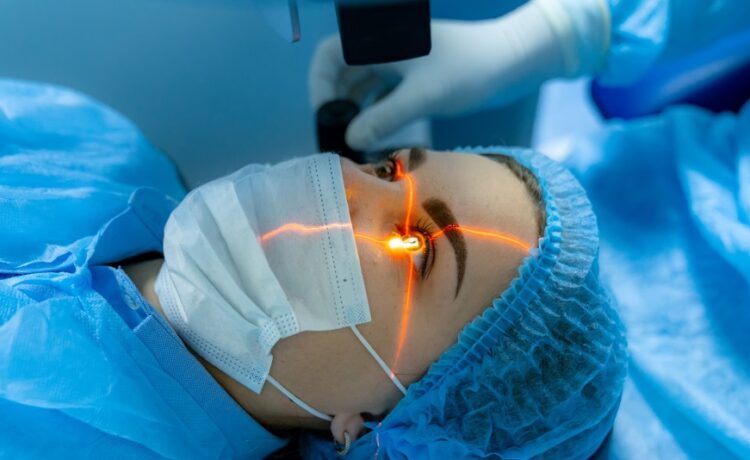If you’re contemplating cataract surgery in Louisville or anywhere else, it’s essential to embark on this journey with a well-informed mind and a prepared spirit. This guide is crafted to offer you an in-depth understanding of cataracts, detailing the condition and the revolutionary surgical techniques available today. We’ll delve into the essential preparatory steps you should take before undergoing the procedure, as well as the crucial aspects of postoperative care and recovery. Whether you’re just beginning to explore your options or are on the verge of scheduling your surgery, this comprehensive overview is designed to clear up any uncertainties and equip you with the knowledge you need for a successful experience.
Understanding Cataracts: What They Are and How They Form
Cataracts: A Common Yet Misunderstood Condition
Cataracts are a widespread visual impairment, especially prevalent in older adults. They occur when the eye’s natural lens becomes cloudy, leading to a decrease in vision quality. This clouding is typically a result of age-related changes in the lens, but other factors like diabetes, ultraviolet radiation, and certain medications can also contribute.
How Cataracts Develop
Initially, proteins in the eye’s lens are arranged in a way that keeps it clear and allows light to pass through. However, as we age, these proteins can start to clump together, forming a cataract. The process is gradual, with the cataract slowly growing and affecting vision over time.
Recognizing Cataract Symptoms
Common symptoms include blurred vision, difficulty seeing at night, sensitivity to light, and seeing ‘halos’ around lights. Colors may also seem faded, and there might be a need for frequent changes in prescription glasses.
Risk Factors and Prevention
Risk factors include age, diabetes, smoking, excessive alcohol use, and prolonged exposure to sunlight. While not all cataracts are preventable, wearing sunglasses and a hat outdoors, quitting smoking, and managing health conditions like diabetes can help slow their development.
Cataract Surgery Explained: Comprehensive Overview and Techniques
What is Cataract Surgery?
Cataract surgery is a safe and effective procedure to restore vision. It involves removing the clouded lens and, in most cases, replacing it with a clear, artificial lens called an intraocular lens (IOL).
Surgical Techniques
-
Phacoemulsification: The most common technique, involving a small incision through which a tiny probe is inserted. This probe emits ultrasound waves to break up the cataract, which is then suctioned out. An IOL is implanted afterward.
-
Extracapsular Cataract Extraction: Used for advanced cataracts, this method requires a larger incision to remove the clouded lens in one piece before inserting the IOL.
Advancements in Cataract Surgery
Recent advancements include laser-assisted cataract surgery, which offers enhanced precision in making incisions and breaking up the cataract. This technique may be particularly beneficial for patients with specific eye conditions.
Preparing for Surgery: Essential Steps and Considerations Before the Procedure
Medical Evaluation
Before cataract surgery, a comprehensive eye examination is essential. This evaluation helps in determining the most suitable type of IOL and identifies any other eye conditions that might affect the surgery.
Pre-Surgical Instructions
Patients may need to stop certain medications and use antibiotic eye drops to minimize the risk of infection. It’s also important to arrange for transportation on the day of the surgery, as you won’t be able to drive immediately afterward.
Lifestyle Adjustments
In the days leading up to the surgery, avoid strenuous activities and ensure you get adequate rest. Staying hydrated and maintaining a healthy diet can also contribute positively to your surgical outcome.
Recovery and Aftercare: Navigating the Postoperative Journey
Immediate Postoperative Care
After cataract surgery, it’s common to experience mild discomfort, light sensitivity, and a gritty feeling in the eye. These symptoms usually improve within a few days. Your surgeon will provide specific instructions on care and when to remove the protective eye shield.
Follow-up Visits
Regular follow-up visits are crucial for monitoring healing. During these visits, your surgeon will check for any complications and assess how well you’re adapting to the new IOL.
Long-Term Care
Protecting your eyes from UV radiation remains important post-surgery. It’s also vital to maintain a healthy lifestyle and keep up with regular eye exams to preserve your vision quality.
Embracing a Brighter Future: The Transformative Power of Cataract Surgery
Choosing to undergo cataract surgery is a decision that can profoundly impact your life, offering a gateway to restored vision and enhanced daily experiences. This guide has illuminated the path from understanding the nuances of cataracts to the intricate details of the surgery itself, and further through the essential preparation and recovery processes. It’s crucial to remember that while the procedure is highly effective and routinely performed, success hinges on careful preparation and adherence to postoperative care guidelines. By taking these steps seriously and collaborating closely with your healthcare provider, you’re not just investing in a medical procedure; you’re opening the door to a future of improved vision and quality of life. As you embark on this journey, carry with you the knowledge and insights gained, and look forward to the world as it becomes clearer and more vibrant post-surgery.









